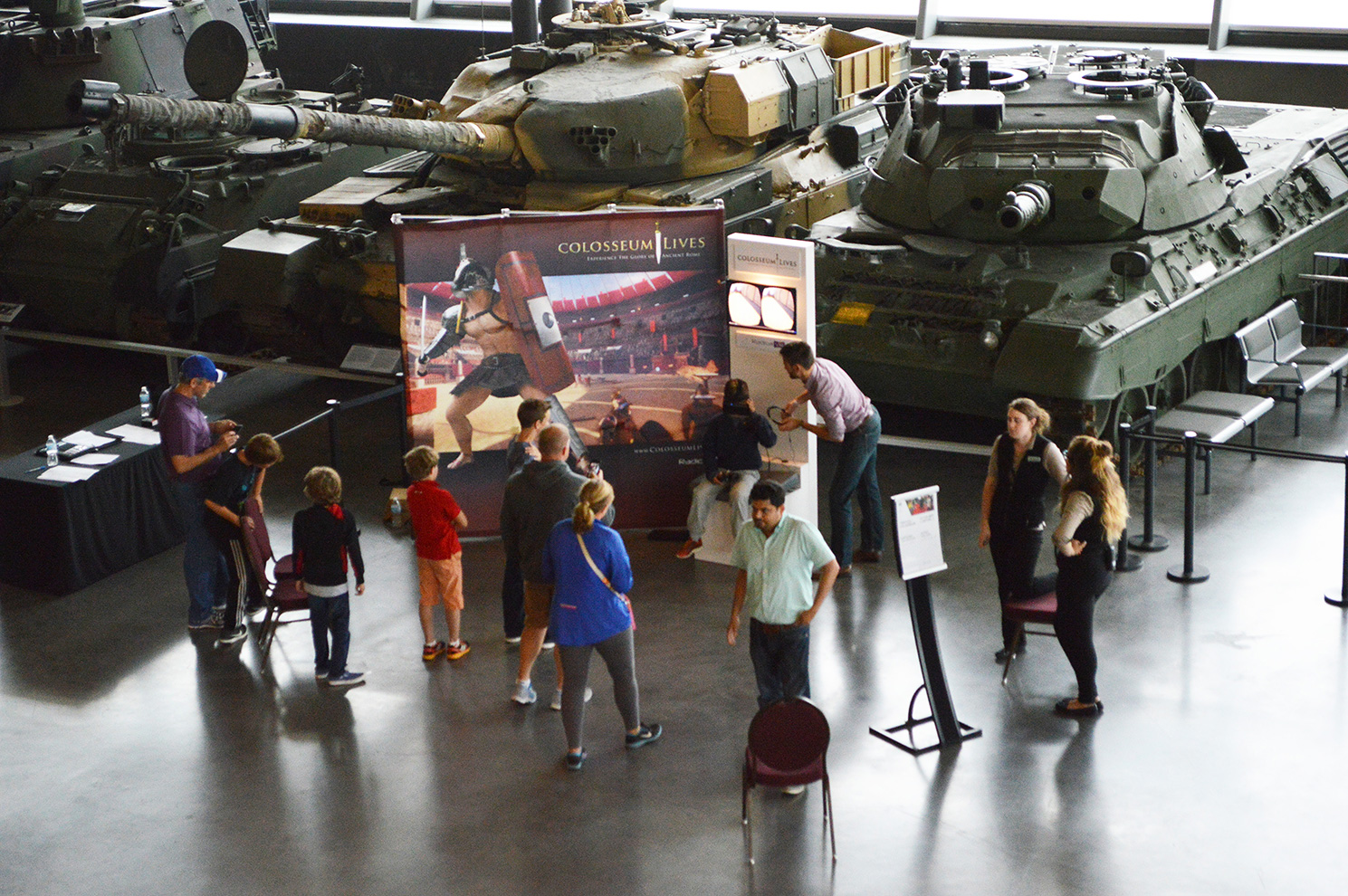Going public at the Canadian War Museum
A while ago we received a very gracious invitation from the Canadian War Museum in Ottawa to come up and show off Colosseum Lives as part of their ongoing exhibit “Gladiators and Colosseum, Death and Glory”. So naturally we took them up on it! We packed up our brand-new stand (cables begone!) and hit the road.
We exhibited for an entire day at the War Museum, surrounded by several dozen tanks and an F-101 Voodoo dangling literally overhead! This is the first time the general public – our intended audience – would try out Colosseum Lives, so we were naturally a bit nervous.
It was a great turnout – about a hundred people stopped by over the course of the day, with some waiting for 40+ minutes (thanks for your patience guys!) for their turn. For most people it was their first time experiencing virtual reality, though a surprisingly sizeable portion of the audience had already heard of the Oculus. We even had a few aspiring developers stop by with questions and advice.
Lots of families were in attendance, which means lots of kids. We had all ages there, from about seven years old all the way to fifty and above. In general, almost anyone under twenty years old was already familiar with using an Xbox controller. Which is certainly good news, but for any product (like our own) that needs to be accessible to all ages, you can’t just rely on the user’s inate familiarity. Good tutorials and intro screens are crucial.
We learned a lot that day. Like for example: teenagers want to shoot and/or stab things, and will ask you why you can’t do that. The answer “This is a museum exhibit, sorry” will be grudgingly accepted. There was a crowd gathered around our little area for most of the day. The sight of someone wearing a VR headset just looks cool, very futuristic, and inevitable helps draw in others.
It was a great test of both the Oculus hardware and the feasbility of running a computer at full load for over 8 hours. We’re happy to report that both the headset and the PC held up, though this really empasized the importance of proper air circulation. Tip: if your computer is encased in a box, you need to have good air flow.
We had two major concerns going in: people wearing glasses and people getting dizzy. Both issues actually turned out better than expected. With a single exception, everyone was able to comfortably fit the headset over their existing glasses. And as for experiencing dizziness, our rough estimate is that 90-95% of people were completely fine. That’s on the optimistic end of what we were hoping for, but it just demonstrates that when the retail version of the Oculus lands in early 2016 (or other similar hardware like the HTC Vive) that problem should be completely eliminated. Yay! This is really the single biggest obstacle standing in the way of mainstream VR, so having such a high success rate even on year-old hardware was encouraging.
The next day we hosted a presentation and demo for an audience of staff-members from various Ottawa museums. But more on that later.

